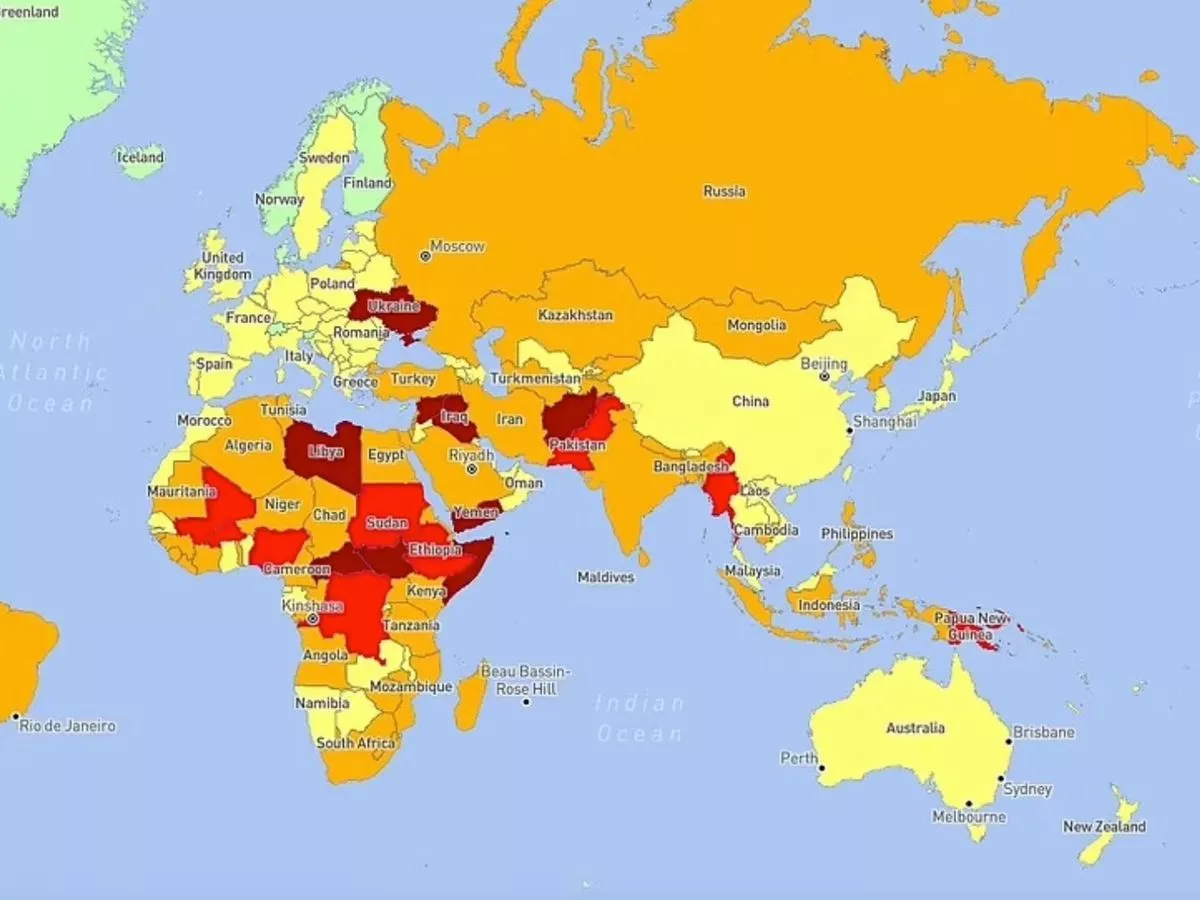waynethomasyorke.com – The world is a vast and diverse place, filled with countries that offer a wide range of experiences, cultures, and landscapes. However, not all destinations are created equal when it comes to safety and security. The concept of “dangerous countries” is often subjective and can be influenced by media portrayal, political climate, and personal experiences. Nonetheless, there are certain countries that consistently rank high on various risk indices due to factors such as crime rates, political instability, terrorism, and health concerns. This article aims to explore the geography of risk by examining some of the countries commonly considered dangerous and the reasons behind their classification.
The Criteria for Danger:
Before delving into specific countries, it’s important to understand the criteria that often define a country as dangerous. These can include:
- Crime Rates: High levels of violent crime, theft, and kidnapping can make a country perilous for both locals and tourists.
- Political Instability: Civil unrest, war, and governmental collapse can lead to a breakdown in law and order.
- Terrorism: The threat of terrorist attacks, whether from international groups or domestic insurgents, can make a country unsafe.
- Health Risks: The prevalence of diseases, inadequate healthcare, and the risk of pandemics can pose significant health threats.
- Natural Disasters: Countries prone to earthquakes, hurricanes, floods, and other natural disasters may be considered risky due to the potential for sudden and devastating events.
Exploring Dangerous Countries:
- Afghanistan: Ranked as one of the most dangerous countries in the world, Afghanistan suffers from ongoing war, terrorism, and political instability. The Taliban’s control over large parts of the country and the presence of other militant groups contribute to the high level of risk.
- Syria: Since the outbreak of the Syrian Civil War, the country has become synonymous with danger. The conflict has led to a humanitarian crisis, widespread destruction, and the displacement of millions.
- Somalia: Piracy, terrorism, and a failed state contribute to Somalia’s reputation as a dangerous destination. The al-Shabaab militant group’s activities and the absence of a strong central government make it a risky place to visit or reside.
- Iraq: Despite its rich history and cultural heritage, Iraq has been marred by war, sectarian violence, and terrorism. The aftermath of the 2003 invasion and the rise of ISIS have left the country in turmoil.
- North Korea: The reclusive nature of North Korea’s regime, its nuclear ambitions, and human rights abuses make it one of the most dangerous countries politically. Travel is highly restricted, and the risk of detention for foreigners is significant.
- Venezuela: Economic collapse, political unrest, and high crime rates have made Venezuela a dangerous place. The country is currently experiencing one of the worst humanitarian crises in the Western Hemisphere.
- Yemen: The Yemeni Civil War, along with a Saudi Arabian-led intervention, has resulted in a catastrophic humanitarian crisis. The country is also a hotspot for terrorism, making it extremely perilous.
- South Sudan: Since gaining independence in 2011, South Sudan has been embroiled in a civil war that has led to famine, displacement, and widespread violence.
Conclusion:
The geography of risk is complex and multifaceted, with various factors contributing to a country’s classification as dangerous. It is important to note that within these countries, there are often pockets of safety and resilience, and the situation can change over time. Travel advisories, news reports, and government warnings are essential tools for understanding the current risks associated with visiting or living in these countries. However, it is also crucial to approach such information with nuance, recognizing that danger is not evenly distributed and that every country has its own unique challenges and stories. As the world continues to evolve, so too will the geography of risk, with some countries improving their conditions while others may face new threats.
